- What is the flying insect monitoring project?
- The Krefeld study proved insect decline for the first time
- Insect monitoring in nature reserves and unprotected areas
- First results of the monitoring in Baden-Württemberg
- Protected areas are important for wild bees
- Biomass comparable, species number decisive
- What we don't know yet ...
- How do the results help to better protect insects?
- What is the next step in monitoring flying insects?
Biodiversity in Baden-Württemberg: nature reserves are important for wild bees
15.07.2025 | Dr. Tobias FrenzelIt is important to know which insect species live around us so that we can better protect them in the future. However, recording and monitoring insects is not that easy. Tobias Frenzel, entomologist at the Natural History Museum in Stuttgart, explains why this is the case and presents the first results of the flying insect monitoring project in Baden-Württemberg. Scientists from the Natural History Museum in Stuttgart are carrying out the project, which was conceived and financed by the LUBW Landesanstalt für Umwelt Baden-Württemberg (Baden-Württemberg State Agency for the Environment). They are supported by the Entomological Society of Krefeld. The scientists' research confirms the great value of nature reserves for biodiversity.
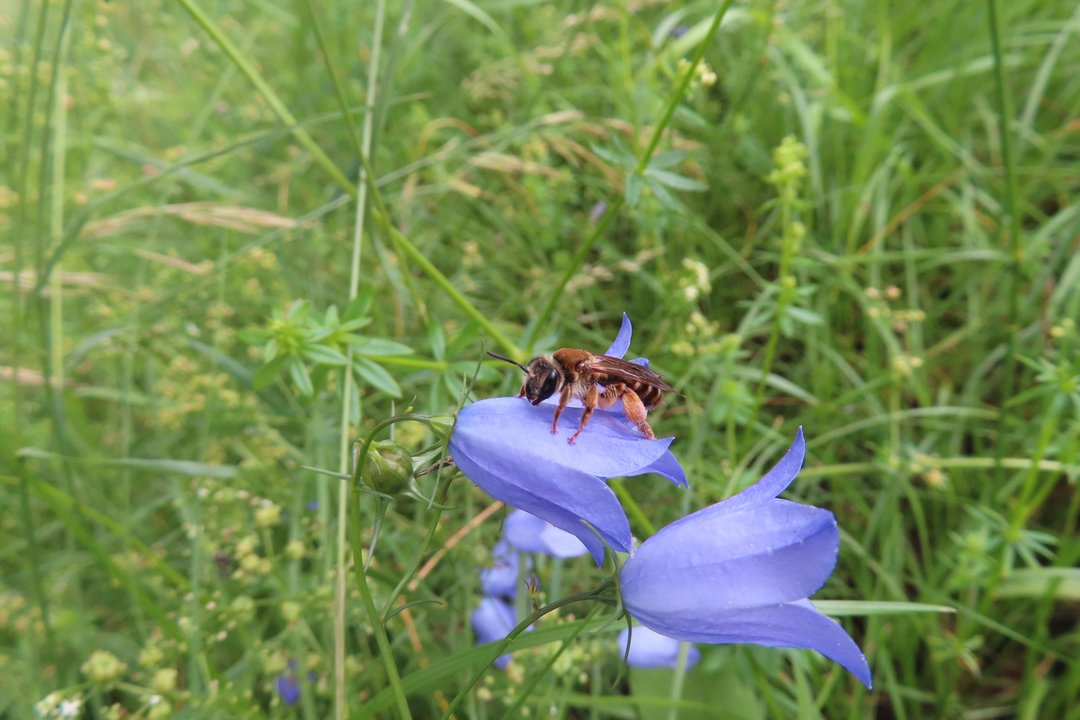
Rare and threatened bee species Andrena curvungula. (Copyright: S. Bigalk, SMNS)
What is the flying insect monitoring project?
In Baden-Württemberg, insects are caught and counted to find out how the populations of local species are developing. For example, flying insects are recorded on a random basis. This kind of standardised, repeated, systematic recording is called monitoring. The monitoring of flying insects primarily focuses on recording biomass, but also on specific groups of insects such as wild bees, wasps, and flies. It is one of a total of six components of the statewide collection of baseline data on insect populations in Baden-Württemberg, which has been conducted by the LUBW on behalf of the state government since 2018.
Other parts of the monitoring project include butterfly monitoring, grasshopper monitoring and ground beetle monitoring.
The Krefeld study proved insect decline for the first time
In 2017, the Entomological Society Krefeld published a highly acclaimed study on insect decline. For the first time, a scientific long-term survey of the biomass of flying insects in Germany was evaluated, with results from almost 30 years. The study’s findings showed a decline in the biomass of flying insects and provided one of the first pieces of evidence highlighting the urgency of insect conservation.
The flying insect monitoring in Baden-Württemberg builds on this survey and is also planned as a long-term project. The aim is to compare the collected data with past data and to derive long-term trends regarding the biomass of flying insects.
Insect monitoring in nature reserves and unprotected areas
Our tasks, here at the museum, include setting up and maintaining so-called Malaise traps, which are used to take a random sample from the insect communities every two weeks. As the focus is primarily on insects in open habitats of cultural landscapes, all sampled areas are located on meadows, grass pastures or arable land. Insects in forests are not recorded in this part of the project.
Another special feature is that half of the areas are located in nature reserves and the other half outside them. This allows for assessment and comparison of the insect communities in nature reserves and in unprotected areas.
Since most insects are not active in winter, the surveys take place from spring to autumn. Every year, ten stations are set up, which look like small tents. The insects are caught in a bottle that can be easily unscrewed for sampling. But the most important part comes afterwards: archiving the samples. To preserve the insects for a very long time, they are kept in containers with ethanol and stored in freezers. The aim is to be able to identify the species accurately at a later date, genetic methods included. Since the same areas are surveyed every four years, it will be possible in future to determine the development of insect populations at these locations. This will provide answers to important questions: Do the same species occur over a longer period of time or do some disappear? Are new species spreading? Is there an insect decline in Baden-Württemberg?
The biomass of flying insects can be recorded particularly quickly. The samples are usually weighed in the laboratory immediately after collection. The biomass can be used to estimate the relative number of insects in the area, as more weight usually means more individual insects.
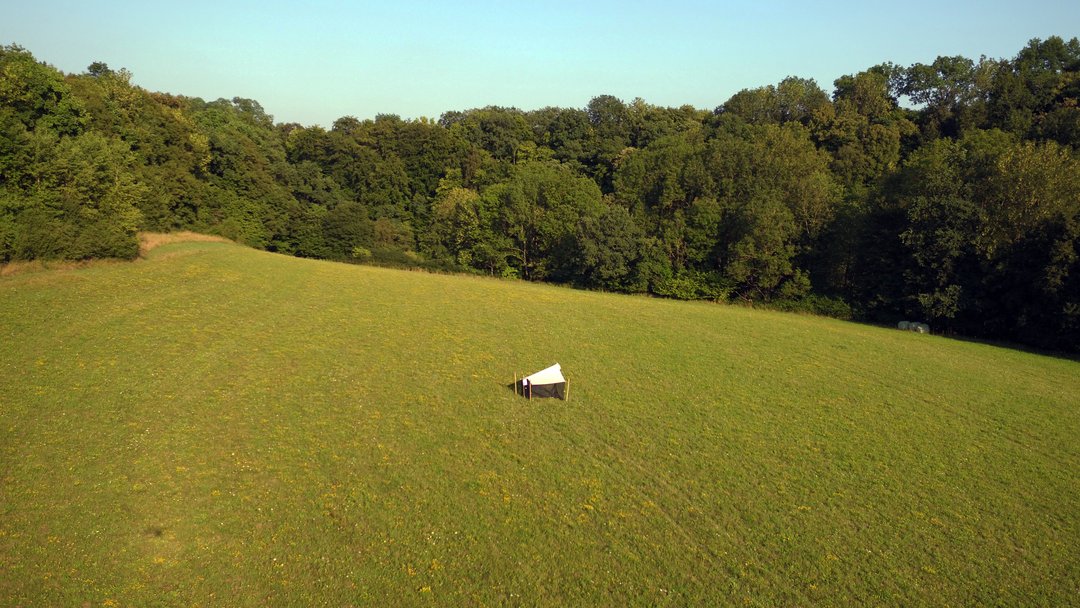
The monitored areas in Baden-Württemberg are located on meadows at a total of 40 sites across Baden-Württemberg and sampling takes place from March to early November. To avoid any negative impacts on insect populations, especially in nature reserves, only 10 of the traps are set up each year. This way, each individual meadow is only surveyed every four years. The impact of such local traps is considered negligible because the insects are not actively attracted, unlike, for example, at night near streetlights or headlights that act like light traps for many nocturnal species. The sampling is also incomparable to the widespread application of pesticides, such as on arable land, which can also affect adjacent natural areas. (Copyright: M. Sorg / Entomological Society Krefeld)

A Malaise trap in a nature reserve near Königsbach-Stein (Enzkreis). The trap closely resembles a tent. Insects enter the 'tent' through openings on two sides and then fall into a collection jar. (Copyright: R. Gamba / SMNS)
First results of the monitoring in Baden-Württemberg
In contrast to weighing biomass, the precise identification of species is significantly more time-consuming. So far, our team has succeeded to identify the wild bee species from three years of monitoring (2019-2021). A total of 14,199 bees were sorted from the samples and examined in detail under a stereo microscope leading to the identification of 239 species. In addition to the complex identification process, time is also required for preparation, labelling and archiving the individual bees in the collection.
Bees are the thus first insect group that we were able to evaluate on a larger scale. As there is not yet sufficient long-term data available—such as over 8 or 12 years—reliable statements can currently only be made when comparing nature reserves within open cultural landscapes to unprotected cultural landscapes. Exactly how insect populations develop over a longer period will only be able to be analysed in the future.
Fun fact: In Germany, there are approximately 580 (wild) bee species in total, 493 of which are found in Baden-Württemberg.
Protected areas are important for wild bees
At the end of last year, we published our initial findings on the bee species we identified and the total insect biomass in a scientific journal (Frenzel et al., 2024). Our findings show that there are more bee species in protected areas than in unprotected areas. We also took other factors into account in our evaluation, such as the plant species found in the areas and the composition of the surrounding landscape. The nitrogen content of the soil and the number of insect-pollinated plant species also played a role, but had less influence than the protection status: on average, there are 14 additional bee species whose presence can be attributed solely to the protection status of the nature conservation areas. Although we already expected to find more bee species in nature reserves, it was important to prove this correlation. It shows that conservation areas, covering only 2.5% of the area of Baden-Württemberg, harbor a large proportion of the native wild bee diversity. These protected areas are therefore extremely important for the preservation of many wild bee species. One indication of what might make conservation areas more suitable habitats for wild bees is the nitrogen content of the soil. The nitrogen content is significantly higher in unprotected cultural landscapes, estimated based on the respective plant communities in the areas. Presumably, nutrient input is higher in the unprotected cultural landscapes due to more intensive land management, leading to less plant species diversity.
Biomass comparable, species number decisive
Another finding is that the biomass of flying insects does not differ much between protected areas and unprotected cultural landscapes. We had not expected this initially, but it is not unusual, as comparison with similar studies shows. From this, we conclude that it is all the more important to look closely at species, as biodiversity and insect biomass do not necessarily display the same patterns—even though this is very time-consuming in the case of insects. The need to look closely is also highlighted by the evaluation of Red List species. In the conservation areas, there were not only more bee species overall but also more endangered species listed on the Red Lists of Germany and Baden-Württemberg.
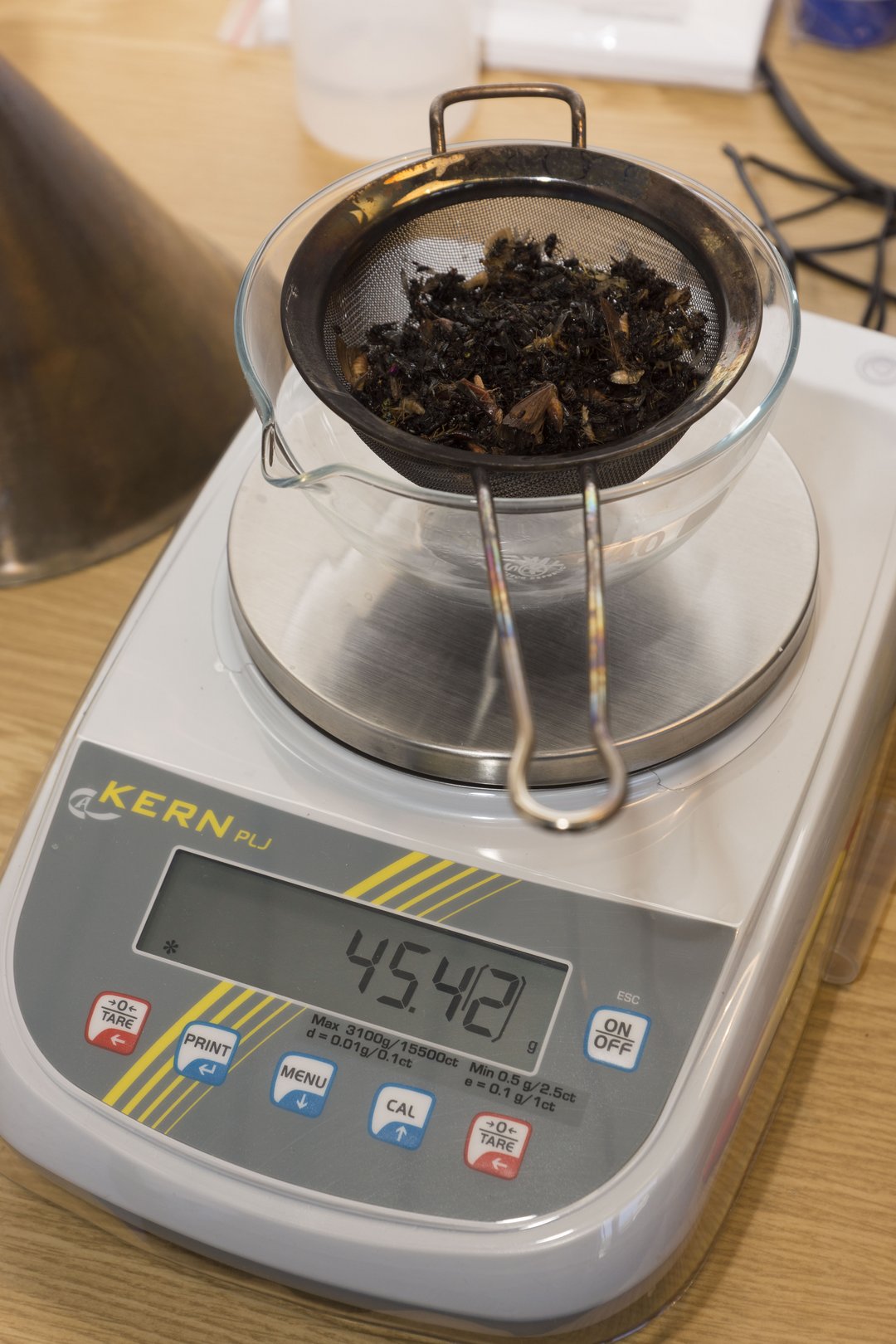
To get a general idea of how many insects were captured at a specific location and time, the biomass of the insects is determined using a scale. (Copyright: R. Gamba / SMNS)
What we don't know yet ...
So far, we can only look at the first few years of a long-term project. At this stage, it is therefore not yet possible to make any statements about long-term trends. To do this, monitoring must be carried out for longer and the samples already collected must be further processed. For example, we cannot yet say whether the number of bee species in the protected areas is stable. Evaluations of other long-term studies have shown that although the number of butterfly, bee, beetle and spider species is generally higher in nature reserves, the species are disappearing from the landscape at the same rate as in unprotected cultural landscapes (Cooke et al. 2023; Rada et al. 2018). The causes are well documented in many publications; however, the proportions and interplay of these factors are not yet fully understood. Climate change, habitat loss, nutrient input, pesticides, light pollution, and other stressors all play a role, but much research is still needed to understand the precise relationships among these numerous factors.
How do the results help to better protect insects?
The results will help us find strategies to better protect our local insect species. If it turns out that the number of bee species in Baden-Württemberg’s nature reserves is indeed declining, the collected data on land use in the surrounding areas, plant communities, and general weather data could provide insights into the causes. Based on this, recommendations could be made on how to protect the reserves more effectively. For example, the establishment of buffer zones around the protected areas could be helpful, where certain land use regulations should be observed, such as limiting the use of pesticides or fertilisers.
What is the next step in monitoring flying insects?
As methods for identifying insect species continue to evolve in the future, the samples have great value for future, more comprehensive studies. On the one hand, it is conceivable that automated image recognition will, in a few years or decades, allow for precise identification of insect species, which would be much faster than manual identification under the microscope. On the other hand, molecular identification methods already used by us could be further developed, enabling reliable identification by detecting insects solely based on DNA traces in the environment. Insects identified with certainty will be included in the entomological collection and archived long-term. The monitoring of flying insects thus represents an interface between current research and traditional museum work.
The following people are or have been involved in the flying insect monitoring project: Sonia Bigalk, Dr. Tobias Frenzel, Raffaele Gamba, Dr. Sebastian Görn, Dr. Michael Haas, Dr. Maura Haas-Renninger, Andreas Haselböck, Thomas Hörren, Prof. Dr. Lars Krogmann, Dr. Martin Sorg, Hubert Sumser, Florian Theves, Dr. Mike Thiv, Ingo Wendt.
Literature
Frenzel, T., Bigalk, S., Gamba, R., Görn, S., Haas, M., Haas‐Renninger, M., ... & Krogmann, L. (2025). Higher bee species richness in conservation areas compared with non‐conservation areas in south‐west Germany. Insect Conservation and Diversity, 18(2), 191-205.
Cooke, R., Mancini, F., Boyd, R. J., Evans, K. L., Shaw, A., Webb, T. J., & Isaac, N. J. (2023). Protected areas support more species than unprotected areas in Great Britain, but lose them equally rapidly. Biological Conservation, 278, 109884.
Rada, S., Schweiger, O., Harpke, A., Kühn, E., Kuras, T., Settele, J., & Musche, M. (2019). Protected areas do not mitigate biodiversity declines: A case study on butterflies. Diversity and Distributions, 25(2), 217–224.

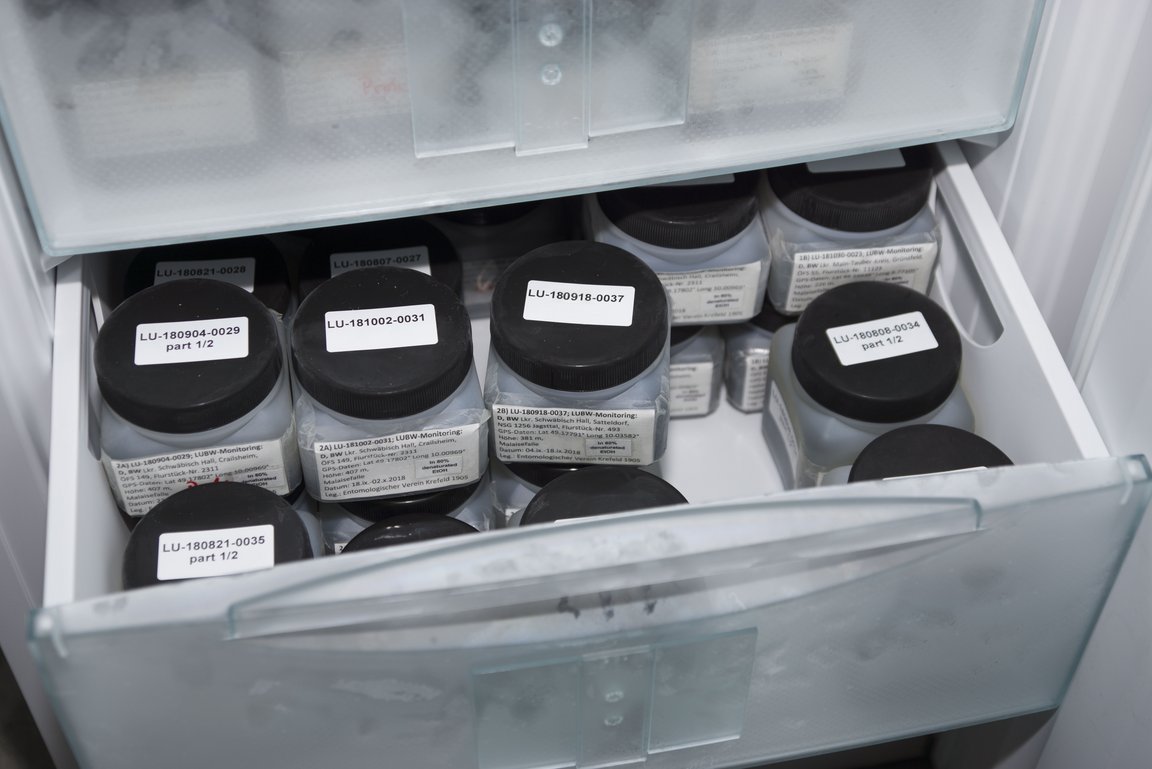

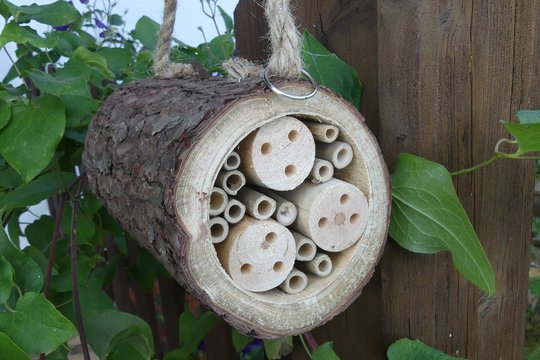


Comments (0)
No Comments